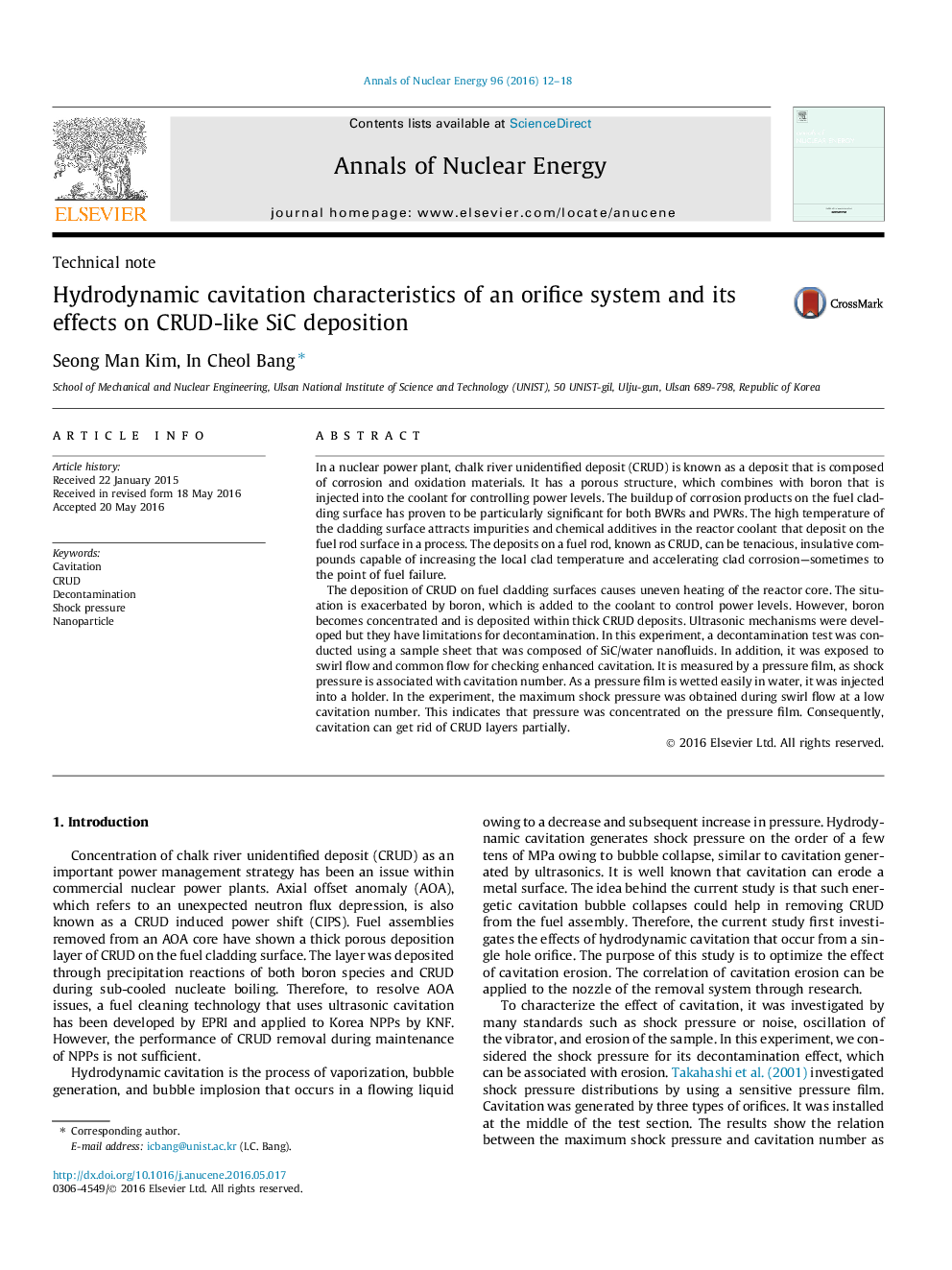| Article ID | Journal | Published Year | Pages | File Type |
|---|---|---|---|---|
| 8067463 | Annals of Nuclear Energy | 2016 | 7 Pages |
Abstract
The deposition of CRUD on fuel cladding surfaces causes uneven heating of the reactor core. The situation is exacerbated by boron, which is added to the coolant to control power levels. However, boron becomes concentrated and is deposited within thick CRUD deposits. Ultrasonic mechanisms were developed but they have limitations for decontamination. In this experiment, a decontamination test was conducted using a sample sheet that was composed of SiC/water nanofluids. In addition, it was exposed to swirl flow and common flow for checking enhanced cavitation. It is measured by a pressure film, as shock pressure is associated with cavitation number. As a pressure film is wetted easily in water, it was injected into a holder. In the experiment, the maximum shock pressure was obtained during swirl flow at a low cavitation number. This indicates that pressure was concentrated on the pressure film. Consequently, cavitation can get rid of CRUD layers partially.
Related Topics
Physical Sciences and Engineering
Energy
Energy Engineering and Power Technology
Authors
Seong Man Kim, In Cheol Bang,
